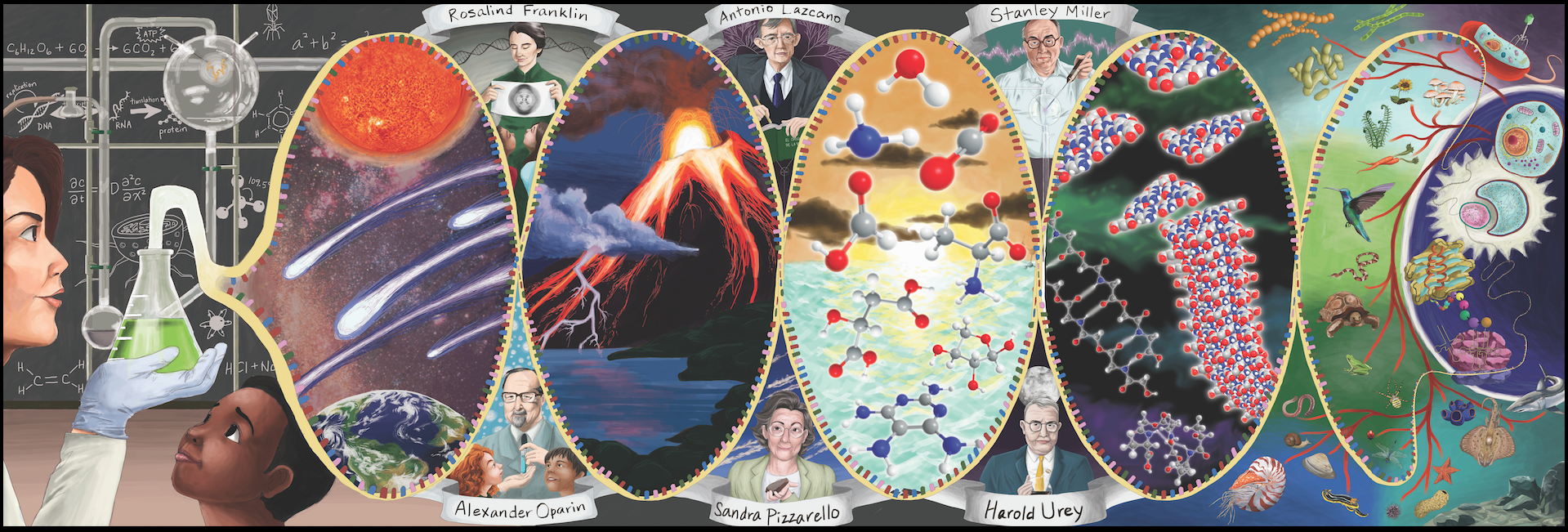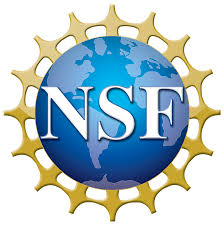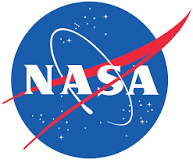The mural, digitally painted by Christine He and David Fialho, is available for on demand printing and ordering. The project came out of a partnership with the Latin American Association and Sequoyah Middle School. The original piece is currently being installed at Sequoyah Middle School.
The Origin of Life
How did life begin? The field of prebiotic chemistry is devoted to understanding how the chemistry of life—namely, biomolecules like DNA and proteins—could have evolved from simpler compounds. One of the earliest and most important scientists in prebiotic chemistry was Alexander Oparin, who, in the 1920’s, proposed that inorganic compounds could undergo complex chemical changes, and eventually give rise to the first cells. Unfortunately, Oparin was unable to experimentally test his theories.
1952 saw the transition of prebiotic chemistry from the realm of theory to experimentation. Stanley Miller, a PhD student working under the Nobel Prize winner, Harold Urey, showed that organic compounds could be formed from sparking mixtures of simple compounds. The Miller-Urey experiment is widely considered the beginning of prebiotic chemistry as a true scientific field; Stanley Miller is referred to as the “father of prebiotic chemistry.”
In the same year, 1952, a scientist named Rosalind Franklin took X-ray images of DNA that led to the discovery of DNA’s double helix structure. This momentous experiment was key to understanding the role that nucleic acids play in carrying genetic information, and sparked questions about how such an important molecule evolved and became ubiquitous in all living organisms. Many theories of the origins of life now consider RNA—the molecule shown snaking across this mural, closely related to DNA—as a central player.
Since 1952, many scientists have contributed important discoveries to the field of prebiotic chemistry. Two scientists featured in this mural are Antonio Lazcano, who has shaped and lead discussion on origins of life research, and Sandra Pizzarello, who has helped us understand the role that extraterrestrial materials could have played in the evolution of biomolecules.
Print your own:
The mural can be printed on a 24," 36," or 42" paper on a plotter using the links below. Contact Christopher Parsons if you are interested in getting a different size.



